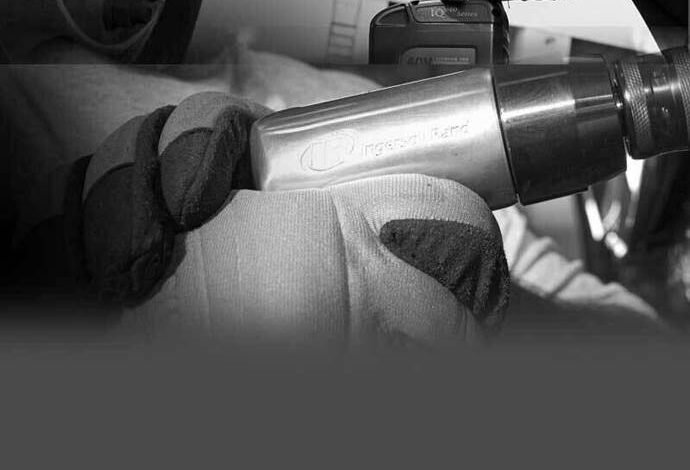Boosting Assembly Line Productivity with Screw Feeders and Torque Arms

Every factory strives for faster output, higher quality, and fewer mistakes. Manual screw placement and handheld torque tools slow down even skilled teams. You can cut cycle time, trim costs, and lift morale by pairing a screw feeder with a torque arm. That duo removes repetitive tasks and steadies every motion. Let’s explore how these tools streamline your line.
The Role of Screw Feeders on Your Line
Screw feeders supply fasteners at a steady clip. They feed screws, nuts, and bolts to an operator or robot tool without pause. You avoid fumbling through bins, reduce runaway inventory, and speed up each station.
How Screw Feeders Move Parts?
A hopper holds a stack of fasteners. Vibrations or an air blast propel one piece at a time onto a track. Guides channel it into the tool’s throat. A sensor pings when the screw clears the track. The system refill begins. All that happens in less than a second.
Benefits of a screw feeder include:
- Reduced search time for each fastener
- Fewer interruptions while parts restock
- Improved cycle consistency
- Safer handling, no risk of spills
- Easy changeover for different fastener sizes
Imagine a station where each pick requires three seconds of hand motion. Multiply that by 1,000 screws per shift. You save nearly an hour per operator by automating feed. When you add lineup consistency, you gain even more.
See also: Advantages of Optical TPU Technology for Clear Bra Owners
Torque Arms: Balance and Accuracy
A worker holds a torque tool overhead all day. Fatigue sets in. Variances in wrist angle lead to over- or under-tightening. A torque arm takes that weight off shoulders. It guides the tool in a fixed path and records each twist.
How Torque Arms Operate?
The arm clamps to a bench or frame. It pivots on joints that hold the tool at the right height. A spring or pneumatic cylinder counters the tool’s weight. A built-in sensor relays torque data to an HMI or PLC. If the tool strays from spec, the system flags the cycle.
Key gains with a torque arm:
- Steady wrist angle for uniform torque
- Zero tool bounce during run-down
- Real-time feedback for traceability
- Strain relief that boosts operator comfort
- Faster cycle times with less retry work
Consider a channel assembly: 12 fasteners require 18 Nm each. Handheld, some fall short or go too tight. With a torque arm, every fastener hits spec on the first pass. That means fewer rejects and no rework station.
Combining Screw Feeders and Torque Arms
You see major wins when you marry feed and torque. One feeds and presents; the other tightens and tracks. The line flows without pauses. No pick, no torque. That simple rule drives every station.
Steps to Sync Both Systems
- Mount the feeder right beside the torque head
- Link the feeder’s sensor to the torque tool’s control
- Set the torque tool to “await part” until the feeder clears
- Tune feed speed to match torque cycle time
- Program the PLC to log both feed count and torque value
Once set up, you watch throughput climb. OEE moves up as cycle consistency improves. You spot jams or torque fails at once. Operators no longer scramble for parts or tools.
Quality Control and Data Collection
Traceability matters more now than ever. You want proof that each unit meets spec. By linking feeders and torque arms to your MES or database, you capture every detail automatically.
Data Points to Gather
- Fastener type and lot number
- Torque value per screw
- Operator or robot ID
- Station cycle time
- Error codes for misfeed or torque out of range
Armed with that data, engineers spot trends. If a certain lot shows high run-out, you quarantine it fast. A slow feed cycle on one shift may point to a dirty track. You fix it before scrap rate spikes.
Why Choose Flexible Assembly Systems?
You need gear built for your parts, processes, and growth plans. Flexible Assembly Systems tailors each module to fit shelf height, tool brand, and control network. You avoid awkward retrofits. Our team walks you through every step, from ROI study to start-up.
Custom Modules for Every Task
- Vibratory hoppers in plastic or stainless steel
- Tracks sized for head diameters from M1 to M12
- Pneumatic or electric torque arms with 5 to 200 Nm range
- PLC integration with all major brands
Service and Support Network
- On-site training for operators and maintenance staff
- Spare-parts kits for quick swap of wear items
- Remote diagnostics via secure VPN
- Local field techs in every time zone
When you partner with Flexible Assembly Systems, you get a flexible roadmap. You avoid vendor lock-in. You expand line capacity one station at a time.
Installation and Commissioning
A smooth install matters as much as reliable gear. We follow a proven sequence that minimizes downtime.
- Pre-install survey to gather mount points and clearances
- Off-site assembly and dry run of modules
- On-site mount, wiring, and air hookup
- Control-system integration and I/O mapping
- Pilot run with production parts
- Final tuning and hand-off to your team
By the time we leave, your operators know how to swap a track, load a hopper, and clear a jam. You benefit immediately.
Cost Considerations and ROI
You may weigh the upfront spend against labor savings and quality gains. Here’s a simple model:
Labor cost per operator hour
Time saved per cycle × cycles per shift
Scrap reduction from torque accuracy
Uptime gain from fewer jams
Plug your numbers into a spreadsheet. You often see payback in fewer than 12 months. After that, every shift yields net gain.
Human Factors and Safety
Operators feel less strain with torque arms. They avoid awkward wrist angles and heavy tools. Screw feeders remove repetitive reach tasks. With fewer manual moves, your line meets ergonomic standards. That drives down injury claims and boosts morale.
Expanding Your Line
Start with one station. Prove the concept. Then roll out feeders and arms to high-volume or high-error areas. You build momentum. Each new cell joins the network you already mastered. That phased approach keeps risk low.
Final Thoughts
Automating fastener pick-and-tight steps yields clear gains. Screw feeders speed part delivery. Torque arms steady each turn. Together they smooth flow, tighten quality, and lift operator comfort. If you aim for steady yields and lean growth, this duo makes a strong pair. Partner with Flexible Assembly Systems to tailor a solution that fits your needs and budget. Your line will hum along with fewer hiccups and better returns—one fastener at a time.





